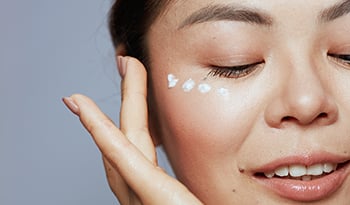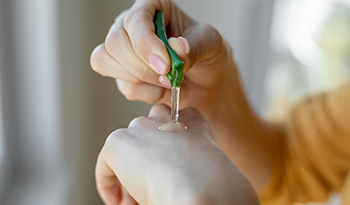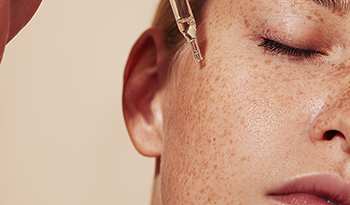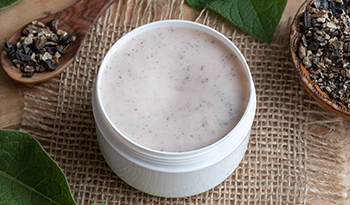To Mix Or Not To Mix (Your Skincare Ingredients)
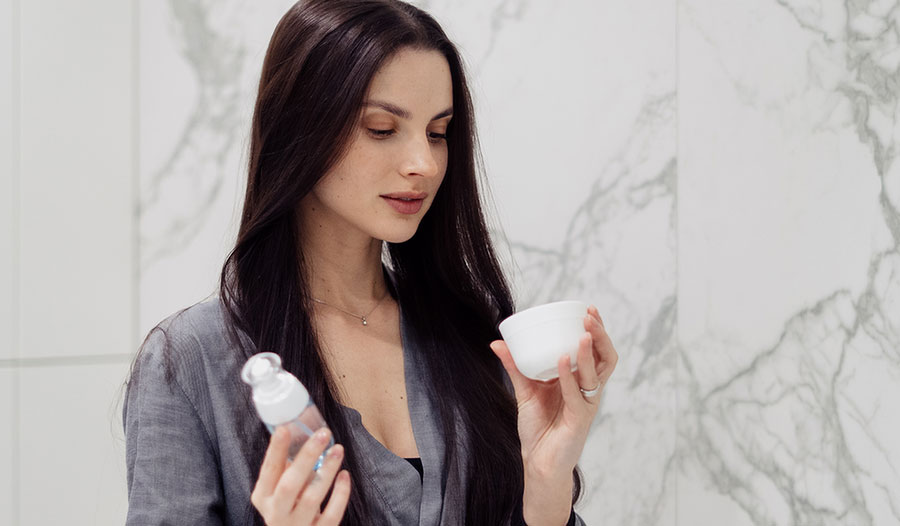
Once you’ve gotten all the optimal skincare products for your unique skin concerns, the next step is to make sure you’re using them correctly. You don’t want to waste your time or money by incorrectly mixing products, or by applying them in the wrong way. As a dermatologist, a common mistake I see in my practice is that people have the right skincare products, but are using them incorrectly.
If you’ve done your homework to find your ideal skincare ingredients, you want to make sure you’re not putting them on at the wrong time of day or in the wrong order. It is also important to know which skincare ingredients work well together and which ones do not, so you get the most activity out of the products. For example, when some ingredients are mixed, they enhance the potency of each other so they are more effective, whereas others can inactivate each other or worsen side effects.
There is a wide range of considerations for mixing skincare products, but I’ll review the key ones you should definitely know about. Also included are links to some of my favorite products for each.
Mix-Worthy Skincare Ingredients
Vitamin C, Vitamin E, and Ferulic Acid
Vitamin C can be a bit of a finicky ingredient because it breaks down easily when exposed to light and oxygen. Studies have demonstrated that vitamin E works synergistically with vitamin C to decrease its breakdown, and ferulic acid helps maintain the optimal pH necessary for vitamin C to function. Therefore, you may notice that these ingredients are frequently combined in vitamin C serums.
Benzoyl Peroxide (BPO) and Adapalene
Although benzoyl peroxide can cause the breakdown of other retinoids, it doesn’t do so with adapalene. This combination of ingredients can be a great tool to help combat acne because the BPO tackles the bacteria that cause acne (propionibacterium acnes), and the adapalene regulates skin cell turnover to prevent the early formation of acne. This combination is available as a prescription, but you can also buy these as two separate products, and use them together.
Vitamin C and Sunscreen
The current view on vitamin C is that it is best applied in the morning because it helps decrease damage caused by the sun and other daily environmental pollutants. Because of this, it has synergistic effects with sunscreen in fighting sun damage. I wouldn’t necessarily buy a product that has vitamin C formulated together with the sunscreen because it may not be at the optimal pH for vitamin C to be functional, but I would put vitamin C on in the morning, underneath sunscreen.
Retinoids and Moisturizers
Retinoids can cause irritation, flaking, and dryness. Therefore, if you’re using a retinoid product, it’s important to also use a good moisturizer at least once or twice a day. Look for moisturizers that include hyaluronic acid, ceramides, and/or glycerin. Typically, I recommend applying the retinoid first to increase penetration and effect, however, if someone is experiencing a lot of side effects from the retinoid, applying the moisturizer first may help minimize them.
Ingredients to Avoid Mixing
Retinoids and Retinols
You’re probably thinking, huh? What I mean here is that if you are already using a retinoid product like tretinoin or adapalene, make sure that you aren’t double-dipping by accidentally using other products that have retinols in them. I see this commonly occurring when someone buys a “nighttime moisturizer” that contains a retinol, but they are already using one of the stronger retinoids. Using both can increase side effects such as dryness and irritation.
Benzoyl Peroxide and Tretinoin
Benzoyl peroxide can inactivate tretinoin (a prescription retinoid), which would be unfortunate since it is such a great skincare ingredient. Benzoyl peroxide should be used in the morning, and tretinoin should be used at night.
Retinoids and Sunlight
One of the retinoids, tretinoin, breaks down when exposed to sunlight, so it should be applied at bedtime. For this reason and to keep things simple, I typically recommend that people apply any of the retinoids (adapalene, tretinoin, or retinols) at night, even though some can technically be applied in the morning.
Dapsone and Benzoyl Peroxide
Dapsone is a prescription acne medication that can cause orange-ish discoloration of the skin when applied at the same time as benzoyl peroxide. It is best to separate the use of these two ingredients so that one is in the morning and the other is at night.
Vitamin C and Niacinamide
This is a bit of a controversial topic. Older research showed vitamin C in its pure form (ascorbic acid) interacted with niacinamide to form nicotinic acid, which can cause irritation and dryness. Fortunately, though, this only occurred at high temperatures, which is unlikely when products are used on the body and stored at room temperatures. Nevertheless, because of the specific acidic pH that vitamin C needs, it’s best to get these ingredients formulated separately. However, it is fine to use a vitamin C product in the same morning sequence as another product with niacinamide.
Alpha Hydroxy Acids (AHAs), Beta Hydroxy Acids (BHAs), and Retinoids
These ingredients don’t necessarily interact with one another, but they can all cause irritation and dryness. As such, if you’re using several products with these ingredients, it can be too much. AHAs such as glycolic acid and BHAs such as salicylic acid work as chemical exfoliators to remove outer layers of dead skin cells. If you want to incorporate AHAs or BHAs into your skincare routine, I recommend choosing one of them and then alternate it with your retinoid so you use these on different days.
Remember To Keep It Simple
I hope these guidelines are helpful as you curate your skincare routine. One reminder: you don’t need a million products in your skincare routine. Having too many products on the skin can be detrimental and can even cause acne or irritation. It’s best to find a few good products and keep things fairly simple.
What Is The Correct Order To Apply Products In?
One final question that commonly comes up in relation to mixing skincare ingredients is: what is the appropriate sequence in which to apply skincare products?
Skincare washes should be performed first and then rinsed off. Pat the skin dry after washing. In general, products should be layered in order of consistency, with lighter-weight serums and gels applied first, followed by thicker, occlusive products last. Another good rule of thumb is to apply the most active ingredients first, such as vitamin C, prescription medications, and/or retinoids. Putting these on first improves the chances of penetration into the skin, which is important since they contain the most active ingredients. I like to allow these to dry first before layering on more products. Moisturizers and sunscreens come last because they are thicker. However, if you’re having trouble with irritation from other products, you can try putting the moisturizer on first (right after washing), and that can sometimes help. Don’t get too stressed about the order, though—the routine doesn’t have to be perfect for you to benefit from the products.
Good luck developing your skincare routine, and happy mixing!
Note: This blog is not intended to provide diagnosis, treatment, or medical advice. Content provided on this blog is for informational purposes only. Please consult with a physician or other healthcare professional regarding any medical or health-related diagnosis or treatment options. Information on this blog should not be considered as a substitute for advice from a healthcare professional. The claims made about specific products throughout this blog are not approved to diagnose, treat, cure, or prevent disease.
DISCLAIMER:This Wellness Hub does not intend to provide diagnosis...













































































 Table of Contents
Table of Contents




